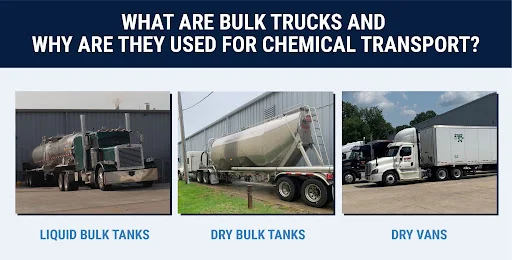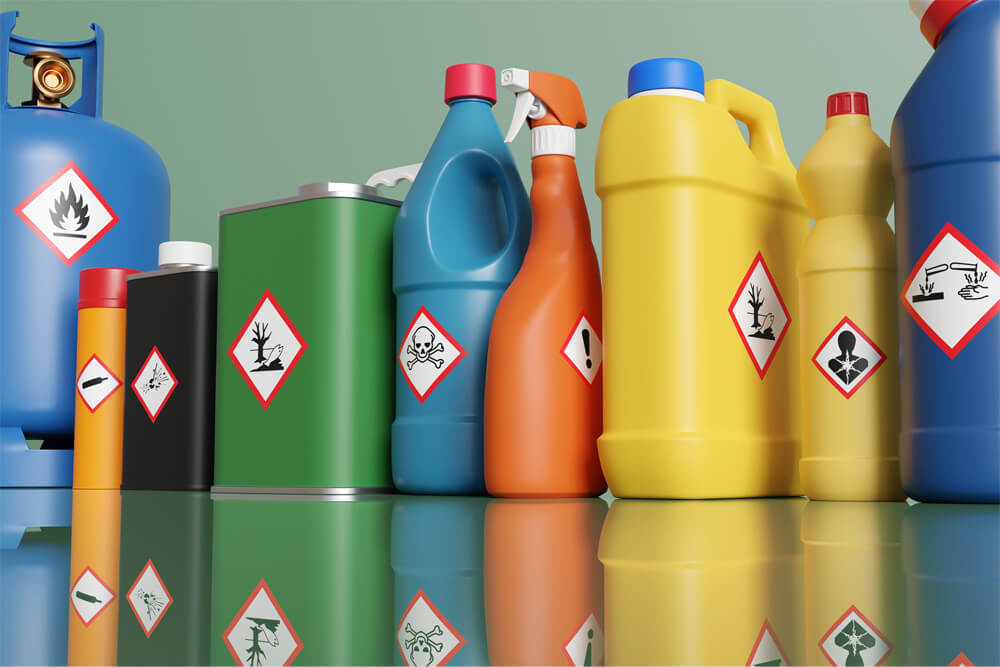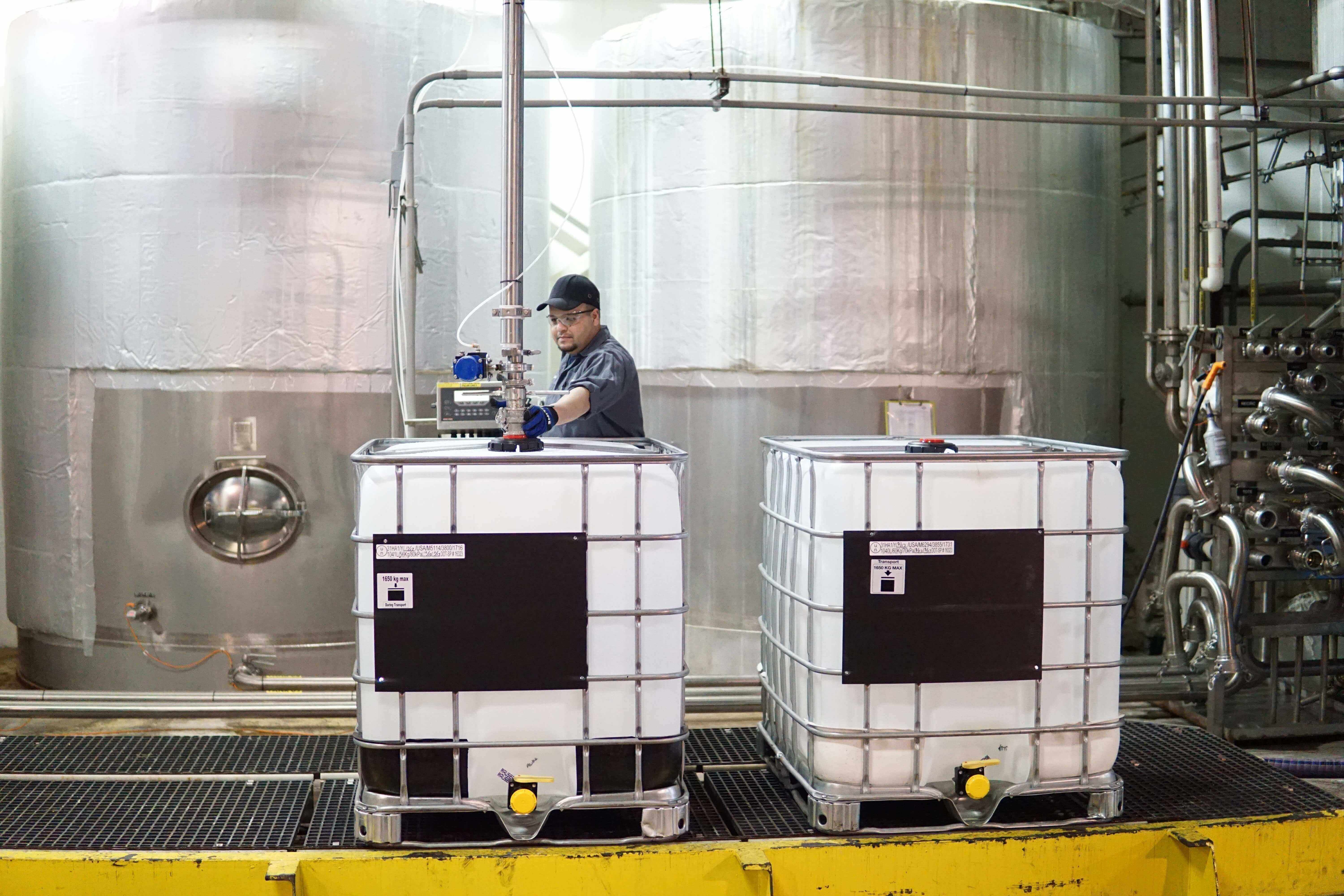
How to Transport Hazardous Chemicals
When it comes to chemical transportation, shipping hazardous materials any distance comes with risks. For safety and legal reasons, it’s critical to know the requirements for moving potentially dangerous products. This guide will outline the important things you should know as well as best practices for chemical transport.
What Is The Difference Between Hazardous And Non-Hazardous Chemicals?
The difference between hazardous chemicals and non-hazardous chemicals is largely based on the harm the chemicals can cause if humans, animals or the environment are exposed to them. Chemicals that contain carcinogens and toxins and/or are unstable, caustic, water-reactive, flammable or explosive are considered hazardous. Any chemical that does not cause harm to one’s health is referred to as non-hazardous.
How to Ship Hazardous Chemicals
When it comes to shipping, all hazardous chemicals (HAZMAT) must be properly contained, loaded, transported and unloaded at all times. Any carrier transporting the chemicals must properly maintain their CDL and HAZMAT licenses. Additionally, all companies must fully disclose the hazards and regulations associated with the HAZMAT chemical being transported.
Furthermore, Safety Data Sheets are required on all hazardous chemicals when being shipped. The information provided in all 16 sections of the Safety Data Sheet provides the broker (if applicable), carrier, driver and receiver all of the information they need to know about the HAZMAT product being transported. This includes everything from first-aid to fire-fighting and accidental release measures. Anyone who comes into contact with the chemical should understand how to properly handle it from start to finish.
What is a Bill of Lading?
When shipping any type of good, the manufacturer is required to include a bill of lading (BOL), which is considered to be a contract in cargo transport.. A bill of lading is a document given to the shipping carrier detailing what is being shipped, how it's being shipped and the path it will take.
In the chemical industry, BOLs include all necessary documentation, labels and Safety Data Sheets. Anyone involved in the transport of hazardous chemicals from your facility will have access to the BOL and will be able to take appropriate legal and safety measures. An example of a BOL can be found below:
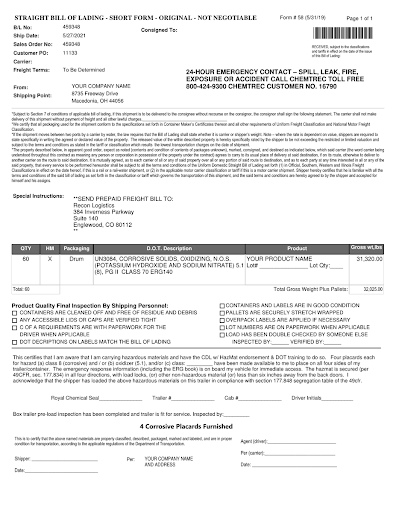
Types of Hazardous Chemicals
While there is no definitive list of hazardous chemicals available, they are broken into nine classes:
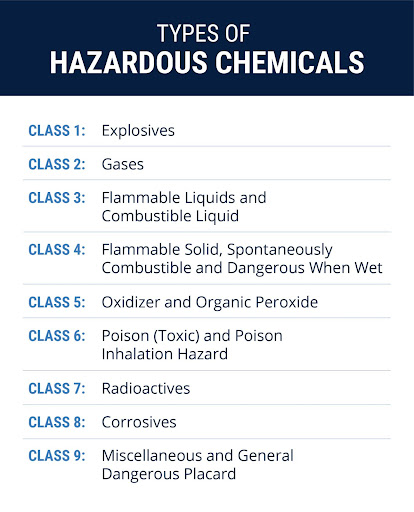
Methods of Chemical Transportation
Several methods of transporting hazardous chemicals are available, including road, air, ocean and rail. Chemical transportation companies may specialize in one, multiple or all methods of shipping chemicals.
Road Chemical Transport
Road chemical transport is the most common. This tried and true method of HAZMAT trucking is more economical and allows carriers transporting chemicals to work on an optimal schedule. There is no concern about ports, stations, or airport schedules lining up. This ensures time-sensitive cargo is properly transported. Furthermore, oversized and heavier loads are eligible for shipment.
You may have noticed trucks driving on the road with a diamond-shaped placard on the exterior like the one below:
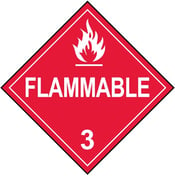
This indicates that the truck is carrying hazardous material. There are several types of HAZMAT placards, each with different colors, patterns and words corresponding to different hazardous chemical characteristics.
You may have also seen signs like this on the road while driving:

This indicates that trucks carrying hazardous materials are not eligible to travel on this road. Trucks carrying hazardous chemicals will need to plan for routes that do not intersect with these restrictions.
Air Chemical Transport
Air chemical transportation is another common method. It allows airline HAZMAT carriers the ability to deliver goods directly to the buyer’s warehouse both domestically or internationally. Oversize loads are permitted on some planes. However, a complete charter may be required in order to accommodate the extra space. This is one of the most expensive methods for shipping chemicals.
Ocean Chemical Transport
Sea chemical transport companies can ship full or partial containers. The HAZMAT port system is well-defined throughout the world, which makes this an economical option for shipping chemicals internationally. Customs procedures are simplified, which ensures faster delivery of the product.
Rail Chemical Transport
Rail chemical transportation allows for faster delivery than other methods detailed here. Those who need special platforms or containers to safely ship the chemicals can make the request when booking with HAZMAT carriers.
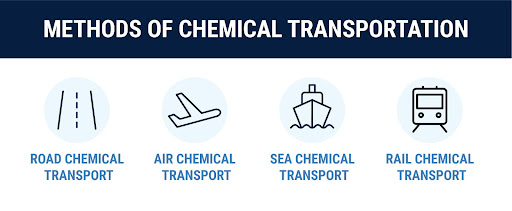
Cost of Transporting Chemicals
The cost of transporting chemicals relies on several factors. The first will be based on whether road, air, ocean or rail is used for chemical transportation. From there, the distance must be factored into the equation. The farther the chemical is being shipped, the higher the cost will be. Additionally, the size of the shipment will affect the cost. Any of the containers used to transport the chemicals will also factor into the final price.
The best way to determine the cost of chemical transportation is to speak with carriers directly for a quote or create a relationship with a freight broker.
How Freight Brokering Impacts Shipping Chemicals
Freight brokers are essentially a middleman in the chemical transportation business. Rather than chemical companies working directly with HAZMAT carriers, they speak with a freight broker about their chemical transportation needs as they arise.
Freight brokers have their own network of chemical transportation companies they can call on when a chemical company is in need of a shipment. The broker has already vetted the HAZMAT carriers to ensure the companies have the property licenses, safety procedures and insurances. Using a broker can help keep shipping costs consistent for the same size jobs. It also eliminates the need to vet HAZMAT trucking companies and other carriers. The freight broker charges a nominal fee for using their network, but it can help ensure the chemical transport process runs smoothly.
Chemical Transportation Best Practices
When it comes to chemical transportation, it is important to provide all of the information about the chemical being shipped at the beginning. Providing vague information to a HAZMAT carrier will result in an inaccurate quote. As additional, in-depth information is provided, the quote can double or even triple in costs.
Additionally, every carrier must be fully vetted. Failure to ensure a shipping carrier has the right licenses and insurance can fall back on the chemical company or shipper. Furthermore, before any chemical is shipped, it must contain the right packaging and labeling. Using incorrect labels is considered a federal offense in the U.S. and can result in fines of $75,000 and jail or prison time.
Chemical Transport Mistakes To Avoid
Even by following the best practices, mistakes can happen. The most common is not preparing for supply chain interruptions. Should severe weather impact HAZMAT trucking, it can cause delays in arrival or even cause time-sensitive chemicals to be disposed of. Some interruptions cannot be avoided, but those that can be predicted (like severe weather) should be part of the chemical transportation strategy.
Another mistake that is commonly made is not vetting a new carrier. If the carrier that was supposed to transport the chemicals falls through, chemical companies often scramble and find the first carrier that can transport the load. This can be a costly mistake. Any carrier must hold a Hazardous Materials Safety Permit (HMSP) in order to transport any chemicals. Failure to find the right carrier will fall back on the chemical company or shipper of record. This should be avoided at all costs.
Reliable Packaging For Your Chemical Transportation Needs
Shipping chemicals the right way can be difficult or even confusing. Fortunately, Royal Chemical is on your side. As an industry-recognized chemical contract manufacturer with over 80 years of experience, we can provide you with the proper packaging and logistics solutions you need to transport chemicals.
Schedule a free, no-obligation consultation with our knowledgeable team today and learn more about outsourcing your operations to save time, money and energy.
Talk to an Expert
Streamline Your Chemical Manufacturing Process
Royal Chemical’s expertise in blending, packaging and shipping can save you time, reduce costs and deliver consistent results.













